How to Reduce Humidity in a Warehouse: Practical Tips and Solutions
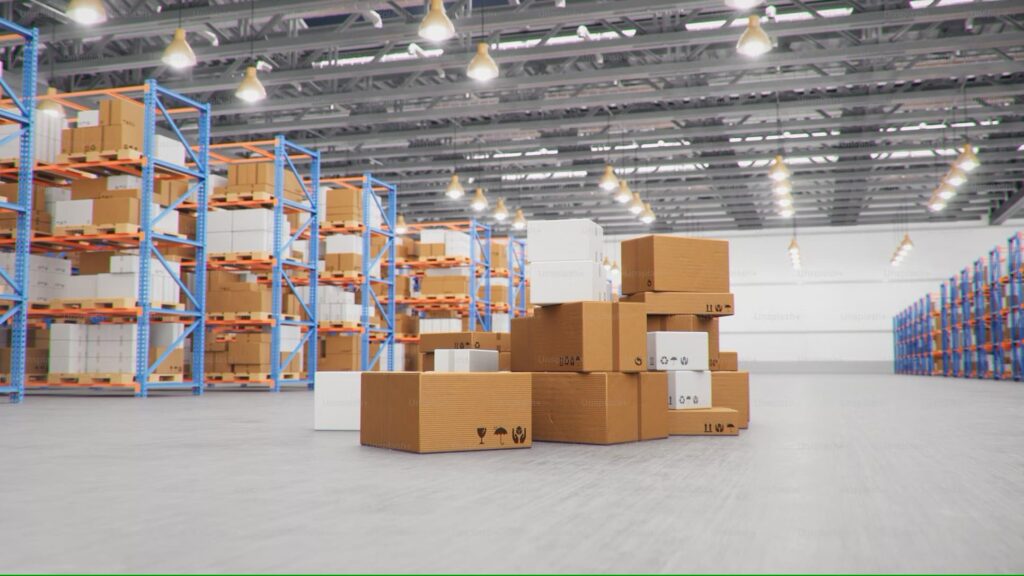
Warehouses have wide use for businesses. They serve as a major space for storing goods, equipment, and materials. However, high humidity levels can compromise their functionality, and bring in lots of problems to deal with. In this article, I will go through the major strategies to identify and reduce humidity in your warehouse. Let’s slide underneath to the details. Why Is High Humidity a Problem in Warehouses? High humidity in the warehouse leaves you with multiple problems. Excess moisture in the air creates an ideal environment for mold and mildew growth. It does spread quickly and damage stored products. High humidity does not spare even metal components. The rust and corrosion growth compromise the quality of machinery, tools, or metal-stocked products. Besides, if your warehouse has workers, then it is even concerning for their health too. High humidity levels swiftly make the environment uncomfortable. You need to balance the humidity level in the warehouse for both stored goods and workers. How to Identify High Humidity Problems in Your Warehouse? High humidity can silently cause significant damage in a warehouse. You need to follow with regular checks. Try to mark the signs early to protect your goods, machinery, and the health of your workers. Let’s see the key indicators of high humidity in your warehouse. Effective Ways to Reduce Humidity in a Warehouse High humidity in a warehouse can lead to damaged goods, compromised equipment, and uncomfortable working conditions. You need to come forward with practical solutions to keep moisture levels under control. It will assist to protect both your inventory and workforce. Get to see some effective ways to reduce humidity in your warehouse. Install Humidity Level Sensors You need to have a regular update on the humidity levels in your warehouse. Humidity sensors which can cost as little as $20. It is an affordable and efficient way to keep track of moisture in the air. These will ensure your other efforts are working effectively. Use Dehumidifiers Dehumidifiers are one of the best tools for reducing excess moisture from the air. Install industrial-grade dehumidifiers to maintain a stable and safe humidity level. They will be your best long-term investment to protect your products and prevent structural damage. Focus on Better Ventilation Marks the start of reducing high humidity levels with better ventilation. Besides, you should also place exhaust fans to improve air circulation. Warehouses are mostly enclosed places and that is going to be an effective approach against high humidity. Seal Air Gaps Inspect your warehouse for air pockets that allow humid air to seep inside. These gaps often show out around windows, doors, or vents. Caulking or weatherstripping can be a great sealing choice to prevent outside air and indoor humidity levels from rising. Tips for Long-Term Humidity Control in Warehouse You need to go with the best initiatives for long-term humidity control in the warehouse. I will share with you some proven tips to maintain flawless humidity levels in a warehouse. Protect your goods and the working environment of your warehouse. Conclusion You already know the key methods to reduce humidity in a warehouse. Besides, I have also shared with you an effective method to examine humidity levels at your stockroom. Make the best use of stated tips above and address the high humidity issue at ease. Don’t let high humidity compromise your business any further.
What Humidity Level Will Grow Mold?
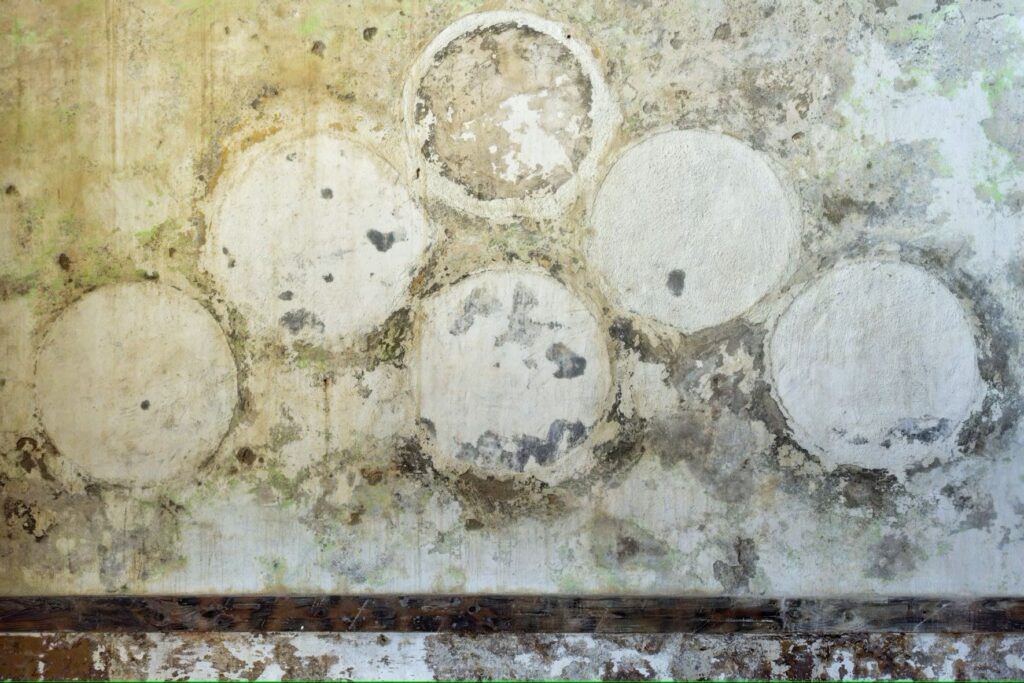
Anyone who has ever laid eyes on a mold problem in a home or has been the victim of one surely knows what a destructive and revolting thing it can be. Mold will warp drywall and turn your bathroom into an awful place to try and relax. One of the ways to control the mold would be to decrease the humidity level. The major question that consumers often ask in this regard is how much moisture they should exactly strip from the air, knowing well that humidity on too low a level can again create problems for the home and health. The key question is this: How much humidity does mold need to grow? How much humidity does mold need to grow? Mold needs humidity the way a plant needs rain. If there’s too little, then it just can’t grow. That’s why experts have set the advice that you keep humidity levels in your home at 55% or less. Mold needs 55% or higher humidity to be able to grow. Also, remember not to reduce it below 30%. This can also bring about some health-related problems, such as dry eyes, nose, and skin, as well as worsen the condition of the lungs or skin. Moreover, it dries wooden floors and furniture and makes a house dusty, which fosters house dust mites and static electricity. What should be the normal humidity level? The correct amount of humidity levels should be about 30% to 50% based on the Environmental Protection Agency(EPA). Above this humidity is likely to show signs of molds. There is a high chance that your house is likely to get invaded by pests because of high humidity. Signs that indicate you have high indoor humidity When you are indoors, you should look for a few signs that serve as key points to check for high humidity levels. If you notice these signs frequently, it could mean you have high humidity. How to test your indoor humidity? It is super easy to check for your current humidity. You can do this by simply buying a hygrometer from the store which will display the room temperature and the humidity levels. These devices are super handy as they give you an accurate reading. Causes for high humidity indoors When you have a humidity over 50% of the normal humidity level, you need to know the reason for this. This could be either because of the climate outdoors which will result in increased indoor humidity. Poor ventilation in your home could be the reason for high humidity. Without proper ventilation, the air can not circulate in or out. Your daily activities could potentially increase the humidity in your house. Running electrical appliances such as washing machines, dryers, and dishwashers could be the reason for high humidity. Appliances that have evaporating coils will require air to run. As the air gets sucked inside these appliances, you are most likely to have high humidity levels in your house. Ways to Decrease Your Indoor Humidity Levels Even if you have checked your humidity levels, many factors could raise the humidity levels. It could be easier to fix these problems if you know how to deal with them. Ventilation Ventilation is an important factor in the rise in humidity levels. Trapped water vapors gather inside your kitchen, laundry area, and bathroom which makes your room murky. Although you can get rid of the excess water vapors by opening up the window or turning on the fan, high outdoor humidity could hamper this process. You should use ventilated fans fitting in these rooms to quickly get rid of the humidity. Dehumidifier A dehumidifier could be your lifesaver when it comes to handling humidity. A dehumidifier is a device that lets you control your indoor humidity which doesn’t let mold and mildew grow. You should buy a dehumidifier considering your room size. Proper Insulation Insulation not only preserves the indoor temperature but also controls humidity. Try to keep your basement dry and patch up the crawl spaces. Keeping your rooms properly insulated will stop any moisture from leaking into your rooms as it is the perfect place for mold. Patching up wet areas You should always dry up after large spills of water as it could increase the humidity as it sits to dry itself. If your furniture gets wet, dry up as much water as possible and use a fan over the area. After 24 hours, mold can form on any wet surface. Plumbing If your house doesn’t have proper plumbing, it could be the reason for the growth of mold. Pipes with leaks and cracks will lose water and keep the areas wet. These leaked pipes can increase the moisture in your basement and around the house. You should check for any damaged pipes and properly insulate them which will decrease forming condensation. How to treat mold areas? You should always be on the lookout for dark spots and corners of your house where molds are likely to grow. If you find any trace or smell of mold, contact the professionals as soon as possible. It is important to look into the areas where mold is growing and how much it has already spread. The experts would start the mold treatment processes which include killing the mold spores with a chemical solution. Then they will begin to eliminate the cause of the mold which could be wet areas or high humidity. Conclusion Hitting the ideal conditions could lead to a spike in mold growth around your house. If you have dark and damp places, those areas are at the most risk for mold growth. You should do a proper inspection of your house and check for the humidity levels in every room. Avoid drying clothes indoors and keep your plants outside that release moisture in the air.
What Does The Humidity Percentage Mean On A Dehumidifier

Humidity Percentage – An Introduction The humidity percentage on a dehumidifier refers to the rate of moisture present in the air. In other words, it tells you the relative humidity level in any specific space, depending on the outdoor temperature and state of ventilation. Let us sift through this comprehensive guide about the humidity percentage. How Does A Dehumidifier Work? A dehumidifier is an electronic device that decreases the humidity percentage to a safe level by removing water vapours from the air and maintaining it in the long run. The humidity percentage on a dehumidifier is the desired level of humidity to be attained in a specific area. In order to make the most of dehumidifiers, you need to fully understand the working mechanism of dehumidifiers. Dehumidifiers work on the simple rule of removing water vapors from the air, as a result of which the dampness of air is removed. They work more like an air conditioner. The moist, warm air is drawn into the dehumidifier, worked into the coil, and cooled down. The moisture from the air is condensed into water drops, collected in a removable bucket or hose, and the dry air is released back. The difference that an industrial dehumidifier holds against the residential ones is the specialized manufacturing, size and the humidifying capacity. Setting the desired humidity level for your dehumidifier setting to prevent molds and pests is not much of a big deal. The device has a dial or button marked ‘dryness level’ or ‘humidity level’. What Percent Humidity Feels Humid? The correct percentage of humidity may differ according to area and the nature of operation. The location of your industrial or commercial space and its ventilation is also an important factor for the right level of dehumidifier. Certain spaces like the basement of your warehouse may be more humid than yours due to poor ventilation and may need a higher percentage of dehumidifiers. However, relative humidity between 30% to 50% is considered comfortable. Over 50% of the environment may start feeling excessively humid, and you may feel warmer than the actual temperature outside, which may cause more bad than good. Interpreting Higher Vs Lower Percentages The dehumidifier percentage setting ranges between 5% – 98%. The amount of water vapors in the air exceeding its holding capacity is called relative humidity. Generally, the higher the temperature, the higher the moisture level is, and vice versa. If the air seems moist to you, you need to press the up button to increase the percentage of the dehumidifier.in contrast, the down button must be pressed if the air is too dry to breathe. How Much Humidity Can A Dehumidifier Remove? You cannot exactly conclude how much does a dehumidifier lower humidity level. Most of the industrial dehumidifiers can remove around 50-70 litres of water per day, to even 1000 litres per day depending upon its size and capacity. Additionally, a newly installed dehumidifier may remove more vapors in the initial days. Still, as soon as the humidity level of your workplace reaches a favourable level, the device works in cycles. It is in regular working condition as it has a built-in sensor that shuts down once the desired level is reached. How To Set The Humidity Level On The Dehumidifier? Following a dehumidifier settings chart for the humidity level can be more than helpful while determining the right balance of humidity in your indoors. The hazards of high humidity aren’t confined to just damped walls and damaged furniture; your raw materials, stored goods, machines, and even chemicals may also be affected. Moreover, it gives rise to pests, molds, or other microorganisms. A corresponding dehumidifier setting is given in the table for each temperature level, making the task easy for you. It must also be noted that if your area is prone to severe weather conditions, the settings may need to be changed accordingly. Dehumidifier Percentage Setting Before proceeding to the humidity percentage on a dehumidifier in any season, it’s essential to know that the right humidity level in your industry or workshop is crucial to maintain the well-being of your infrastructure, your stock, and, to some extent, your health. You must know the correct ratio to keep the balance, as the lower percentage of humidity might pose some damage to the production process and raw materials for you in the same way that higher humidity is hazardous for them. You must note that you need a dehumidifier in case the percentage of relative humidity in your desired space is more than 60%. Humidity Percentage On A Dehumidifier In Winter What should the dehumidifier be set at in winter? While winter brings dry air into your place, which is responsible for several damages and adverse effects on the production and raw materials, you need to take into account two things while using a dehumidifier. The water in the tank may freeze due to the low temperature and damage the dehumidifier. Secondly, dehumidifiers with silica or charcoal desiccants are more recommended for large space industrial dehumidification in freezing winters. The humidity level in the winter must be between 45% to 70%, depending on the type of goods produced in industry . Any level higher than this may cause damage to the electrical equipment, materials, and chemicals. If you plan to buy a dehumidifier for operation under lower temperatures, e.g., if the temperature of your place falls below 60℉ in winter, low temperature dehumidifiers are the best. Humidity Percentage On A Dehumidifier In Summer What should I set my dehumidifier at in summer? Water vapor condenses when relative humidity reaches the point where the air is saturated. When enough water vapor condenses, it creates a cloud of water droplets, leading to mold and mildew growth if the air is not constantly circulated. And if your working unit is in an area that is not only warm but also a coastal region, chances are that there will be an increased humidity in the air. In summer, the humidifier must be
Using a Dehumidifier to Dry Clothes: The Ultimate Guide
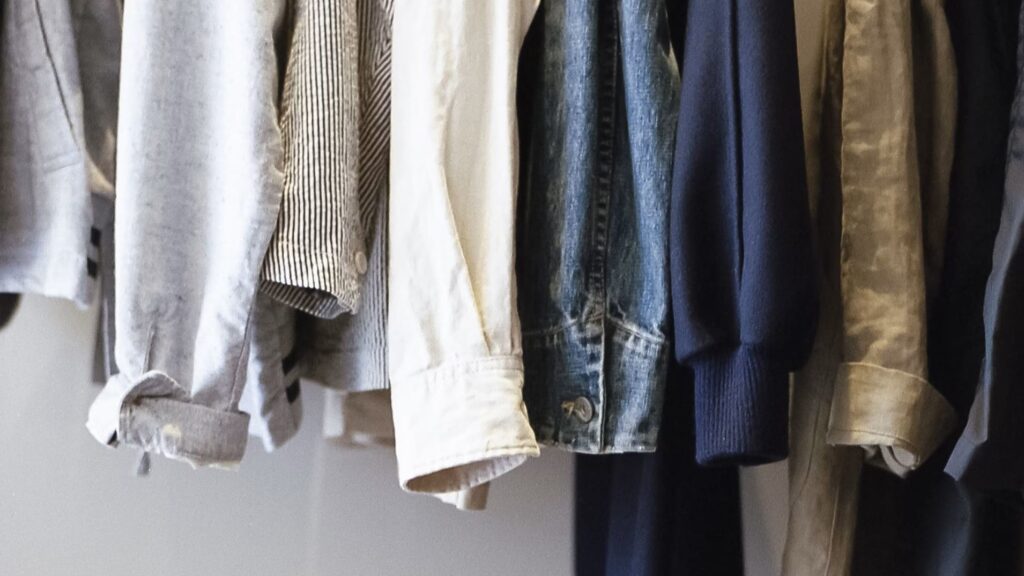
Drying clothes indoors can be a bit of a headache, right? You’re stuck with laundry draped across every available surface, waiting for what feels like forever, only to be left with rooms that feel damp and musty. If you’ve ever had your home and commercial places turned into a humid maze of drying clothes during a rainy spell, you’ll use GETJOEAIR Dehumidifiers. In this guide, we’ll explain how you using a dehumidifier to dry clothes, and how to pick the best Dehumidifier for your commercial place. Why Do People Like Using a Dehumidifier to Dry Clothes? Clothing that is put to dry in a room is likened to wet which results in an increase of humidity in a room due to the releases of moisture from the wet clothing. Excess humidity along with moisture formation leads to bad gas formation, mold, and even mold growth. The dehumidifier eliminates lots of moisture and relative humidity, hence, helping to create a proper environment for you that enables quick drying of used clothes. How Does a Dehumidifier Work for Drying Clothes? Dehumidifiers work by pulling moisture-laden air through their system, where water vapor condenses into liquid form and is collected in a tank. Here’s how it aids in drying clothes: ● Moisture Removal: The device continuously absorbs moisture from the wet clothes and the surrounding air. ● Improved Air Circulation: GetJoeAir all models come with fans that promote air movement, which accelerates the drying process. ● Lower Humidity Levels: Reducing humidity, prevents mold and mildew from forming on your clothes and furniture. How Someone Using a Dehumidifier to Dry Clothes Setting up the Dehumidifier for Drying Clothes Using a dehumidifier is simple, you just need to put it wherever you wish to dry your clothes indoors and make sure the area is well-ventilated. The dehumidifier should be kept away from walls and furniture so that air can freely flow through the dehumidifier. Optimizing Dehumidifier Settings for Drying When using a dehumidifier for drying clothes, it is good to set a dehumidifier for proper working and drying of clothes. Reducing the desired humidity level on the dehumidifier can help faster the process of drying and make the time taken to dry the clothes inside shorter. Maximizing Drying Efficiency with a Dehumidifier In order to use the dehumidifier in drying the clothes prevent it from being placed in congested areas where air circulation is limited. Place the unit away from walls and furniture in order to guarantee that air circulates efficiently around the space. Benefits of Using a Dehumidifier to Dry Clothes Reducing Drying Time with a Dehumidifier Drying time is among the main benefits that are associated with the use of a dehumidifier especially when drying clothes. When the moisture is wiped out from the air, the dehumidifier can indeed speed up the process of drying and further you can do your laundry in less time as compared to traditional methods of air drying. Preventing Condensation and Mould Issues Drying clothes by use of a dehumidifier also combats condensation and mold formation associated with high humidity during laundering. If you keep the correct amount of humidity the laundry as well as neighboring areas do not have such a big risk for supply with dampness and mold. Cost-Efficiency and Convenience of Using a Dehumidifier In addition to its usefulness in reducing humidity in a room for drying clothes, utilizing a dehumidifier is cheaper and more convenient as compared to other methods of drying garments indoors. Tips for Maximizing the Using of Dehumidifier for Drying Clothes GetJoeAir Best Dehumidifier for Clothes Drying at Industrial Level Our industrial dehumidifiers are made for large rooms and can specifically be used in various places. We kindly request to know your application requirements before you make the purchase. Our specialist engineers will advise you well in the selection process to get the best type of dehumidifier in the market. Understanding the Role of Airers and Other Drying Aids When you use a dehumidifier for clothes drying, using airers, drying racks, or other drying accessories can go a long way in helping in the drying process. These aids offer enough area to hang wet dresses so the dehumidifier can effectively remove moisture indoors as well as quicken the process of drying clothes, if any. Comparing Dehumidifier Drying vs. Traditional Dryers Pros and Cons of Dehumidifier Drying Compared to Tumble Dryers When comparing a dehumidifier with the usual tumble dryers, then it’s important to look at the strengths and weaknesses of the process. Although dehumidifier drying makes use of less energy thus producing lesser emissions to the environment, traditional dryers do not compete with dehumidifiers. Effectiveness and Efficiency of Dehumidifier vs. Traditional Dryer In effectiveness and efficiency, dehumidifiers for clothes drying outperforms the other appliances because of efficiency in absorbing the moisture and sparing the energy hence being ecological in indoor drying. While conventional dryers exercise high rates of drying, they also require a lot of energy from the users and raise environmental conservation and cost. Environmental and Economic Benefits of Using a Dehumidifier for Drying Clothes When you use a dehumidifier to dry the clothes then you play your part in conservation of the environment since you use less energy. Besides, due to the practical and economic ability of dehumidifier drying, it can be considered as a long-term effective approach to dry clothes inside the house. How to Choose the Best Dehumidifier Like GetJoeAir for Drying Clothes When shopping for a dehumidifier, consider these features: ● Capacity: Models with larger tanks can handle more moisture, making them ideal for larger spaces or heavier loads. ● Portability: Compact and lightweight dehumidifiers are easier to position near your clothes. ● Energy Rating: Look for energy-efficient models to save on electricity costs. Conclusion Admit it or not, nobody wants to spend hours waiting for their laundry to dry or feel the stench that comes with it. That is why using a dehumidifier is such a smart move that, if you are so inclined,
How To Make Cigar Humidifier – Follow These 6 Steps

To make a cigar humidifier, you need to gather materials, assemble the case, connect the controller to the fan, attach a wet film cloth, and close the tank.
What Types of Water for Cigar Humidifiers Are Best?

Explore what type of water is best for cigar humidifiers, their pros and cons, and how they affect cigar quality.
What is a Cigar Humidifier? A Definitive Guide

Explore types of cigar humidifiers, features, benefits, ways to use them, and maintenance tips. It also includes a buying guide to pick the ideal cigar humidifier.
53 types of industrial dehumidifiers you should know
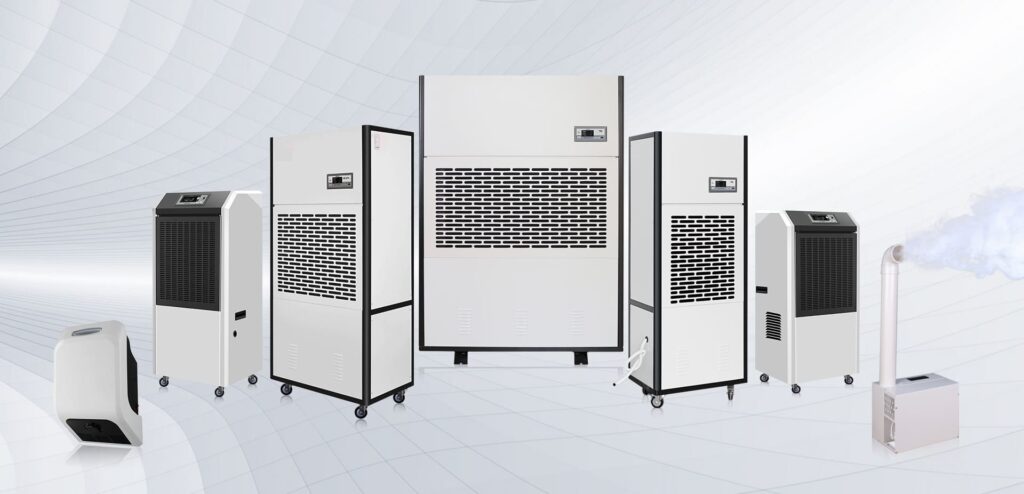
If you’re planning to start selling industrial dehumidifiers, it’s essential to understand the different types available. This article introduces 53 types of industrial dehumidifiers, which will undoubtedly be beneficial for you! Based Capacity Industrial dehumidifiers typically have a large dehumidification capacity, ranging from 60 to 960 liters per day. You can choose the appropriate model based on your needs. If you’re unsure how to choose, our team of engineers can customize the best dehumidification solution based on your location information. According to the dehumidification capacity, it is mainly divided into: 60L dehumidifier 60 liters per day industrial dehumidifier. 90L dehumidifier 90 liters per day industrial dehumidifier. 138L dehumidifier 138 liters per day industrial dehumidifier. 168L dehumidifier A 168-liter per day industrial dehumidifier can also be described as a 7-liter per hour industrial dehumidifier. 240L dehumidifier A 240-liter per day industrial dehumidifier can also be described as a 10-liter per hour industrial dehumidifier. 360L dehumidifier A 360-liter industrial dehumidifier per day can also be said to be a 15-liter industrial dehumidifier per hour. 480L dehumidifier A 480-liter industrial dehumidifier per day can also be said to be a 20-liter industrial dehumidifier per hour. 720L dehumidifier A 720-liter industrial dehumidifier per day can also be said to be a 30-liter industrial dehumidifier per hour. 960L dehumidifier A 960-liter industrial dehumidifier per day can also be said to be a 40-liter industrial dehumidifier per hour. Based Installation Type Dehumidifiers are mainly divided into two types based on their installation method: Portable Dehumidifiers (also called floor-standing dehumidifiers): These can be used on the floor by simply connecting to a power source and can be moved to different locations. Ceiling-Mounted Dehumidifiers: These require a professional engineer for installation on the ceiling and cannot be moved once installed. Portable/Floor Stand Dehumidifiers A floor-standing dehumidifier can simply be placed on the ground and powered on by connecting it to an electrical source. It is also easy to relocate after unplugging or disconnecting the power cord. Typically, these units have caster wheels or a base tray, making them highly flexible for use and convenient for transferring between different projects. Ceiling-Mounted Dehumidifiers A ceiling-mounted dehumidifier is a type of dehumidifier that needs to be installed on the ceiling. Once you receive the ceiling-mounted dehumidifier, you will need to contact a local installation team for the ceiling work. After installation, the dehumidifier cannot be moved. However, this ceiling installation saves a lot of space, making it ideal for projects with limited space or for warehouses where rent is high. Based Application Industrial dehumidifiers are ideal for large areas with high humidity levels and can be used in a wide range of settings. Before you make a purchase, please let us know your application requirements. Our professional engineers will provide expert advice to ensure you choose the best dehumidifier for your needs. Lab Dehumidifier A laboratory dehumidifier is typically used in laboratory environments. Many laboratories have specific humidity requirements, making it crucial to quickly and consistently control humidity levels for optimal conditions. Office Dehumidifier An office dehumidifier is primarily used in office environments. With frequent staff movement, maintaining a humidity level of 40-60% RH ensures a more comfortable atmosphere for everyone working in the office. Kitchen Dehumidifier A kitchen dehumidifier is designed for use in kitchens. In both household and commercial kitchens, washing activities often result in splashes, leaving the floors wet. Prolonged high humidity can cause mold to form on kitchen walls and floors. By using a kitchen dehumidifier, you can control the humidity levels, creating a healthy, mold-free environment! Cellar Dehumidifier A wine cellar dehumidifier is specifically designed for use in wine cellars. It controls the humidity levels in the cellar, ensuring optimal conditions for long-term wine storage. Mushroom Dehumidifier A mushroom dehumidifier is used in mushroom growing rooms. The humidity in these rooms needs to be maintained within a stable range; too low a humidity can hinder mushroom growth, while too high a humidity can severely affect the quality of the mushrooms. A mushroom room dehumidifier with adjustable humidity settings plays a crucial role in ensuring optimal growing conditions. Boat Dehumidifier Boat Dehumidifier are dehumidifiers that are used exclusively on boats. Because the ship is in a high humidity environment surrounded by fresh water for a long time, the humidity is high all year round and can be slightly corrosive. With the use of boat dehumidifiers, the ship’s contents can be better protected. Marine Dehumidifier Marine dehumidifiers are dehumidifiers that are specifically designed for use on large ships at sea. The air on the ocean will be moderately or highly corrosive, because the use of specialized marine dehumidifiers can have a high degree of corrosion resistance, you can have a better experience and life. Hospital Dehumidifier In the hospital, there are often a lot of precision instruments, for the storage of certain humidity requirements. In the use of hospital dehumidifier, can make the hospital instruments have a better use and storage environment. Supermarket Dehumidifier Dehumidifiers for shopping malls are usually used in small superstores and large shopping malls. In the rainy season, the flow of people in and out of the mall will bring in moist air, but also wet the mall floor; at the same time, the mall will also have areas such as fish and fresh food, resulting in increased humidity inside the mall. Once the humidity exceeds the appropriate body humidity of 40% to 60%, it will make the shopping people feel sticky, a good humidity environment in the mall can make customers have a better shopping experience! Workshop Dehumidifier Workshop dehumidifiers are used in all kinds of workshops with different production processes. Many production processes have certain requirements for humidity. Feel free to contact us for more information about your workshop! Woodshop Dehumidifier Dehumidifiers for woodworking workshop, mainly to maintain the low moisture content of wood. Timber is very susceptible to moisture during storage, especially in countries in Southeast Asia, where moisture in the air can increase the wood moisture content of timber,
4 Types of Dehumidifier Water Removal Options

After reading this article, I believe you can choose the most suitable drainage method according to your actual situation. Type 1: Drains to A Bucket – Dehumidifier With A Hose Most dehumidifiers on the market come with drainage hoses. The condensate water is drained through the hose and needs to be collected in a water bucket, which must be emptied regularly to prevent overflow. For industrial dehumidifiers with high dehumidification capacity, a large-capacity water bucket is necessary. This drainage method is simple and cost-effective for small warehouses or spaces with low dehumidification requirements, as it eliminates the need for installing drainage systems. However, if you don’t use the dehumidifier for a long time, remember to clean the hose to prevent bacterial growth and blockage, which can attract insects and spiders. This could prevent condensate water from draining properly when you use the dehumidifier again. Type 2: Empty the Tank Regularly – Dehumidifier with A Water Tank The GetJoeAir water tank series dehumidifiers come with an internal water tank, suitable for small and crowded spaces. This dehumidifier has a built-in water full reminder setting, eliminating the need to regularly check the drainage water level like dehumidifiers with drainage hoses. When the dehumidifier prompts a water full alarm, it automatically stops dehumidifying, regardless of whether the humidity has reached the target level. There will be no new condensate water flowing into the water tank at that time. Additionally, it can be easily converted into an external drainage pipe mode, providing two drainage modes, which is very convenient. Type 3: Drains to Water Pipe – Install Waterline Before Install Dehumidifier Install the drainage system inside the warehouse in advance, and the water will flow directly to the company’s reservoir through the pipe. This method is recommended for large warehouses or spaces using a large number of dehumidifiers. Installation of Drainage System Precautions The dehumidifier’s drainage system needs to be arranged by your company’s professional engineers in advance, considering factors like water flow direction and the length of pipes, to ensure that water collected from the dehumidifier can smoothly flow into the company’s reservoir. Here, we briefly outline some precautions, but specific arrangements should be confirmed with your company’s engineers. Type 4: Condensate Pumps – Drainage Position Is Higher Than Dehumidifier The principle of water pump drainage is that the condensate water discharged by the dehumidifier is pressurized by the motor in the water pump, and then the water is pumped to a higher position than the dehumidifier. If your dehumidifier is positioned lower than the ground, then you should consider using a dehumidifier with a built-in water pump. The general use cases of water pumps can be divided into the following two types: 1. The Dehumidifier Comes with a Built-In Water Pump at the Factory When purchasing a dehumidifier, make sure to choose one with a built-in water pump. This allows the condensate water to enter the dehumidifier’s internal pump, which typically has a lift of around 5-6 meters, enabling the water to be pumped to a level higher than the dehumidifier itself. 2. Install a Pump in the External Drainage System of the Dehumidifier. If your dehumidification area is large and located below ground level, you can install a small indoor reservoir and use a large pump to collect water discharged by multiple dehumidifiers and pump it into a larger reservoir on the ground surface. Please note that you will need separate condensate pumps for each dehumidifier, and the specific pump model and setup should be determined and installed by local professional engineers after calculation. Comparison of Four Drainage Methods: Water collection method Advantages Disadvantages Bucket Collection Low cost, simple operation without the need for professional installation. 1) Having to arrange for workers to pour water every day increases the workload.2) If the water bucket overflows, it will require cleaning the floor, which may lead to economic losses for the warehouse. Internal Water Tank Avoids the hassle of frequent emptying and risk of overflow. 1) Regularly emptying the water is necessary; otherwise, the dehumidifier will stop working.2) Forgetting to empty the water will gradually raise the indoor humidity. Internal Water Tank Eliminates the need for daily manual emptying,collected condensate can be reused. Requires advance planning and professional installation of drainage system, higher upfront cost. External Drainage Route Avoids the hassle of frequent emptying and the risk of overflow. Flexible drainage can pump water to locations above the dehumidifier. FAQ Can the Hose of the Dehumidifier Be Extended If It Is Far from the Drainage Point? You cannot extend the length of the hose on your own. The main reasons are as follows: Therefore, please use the original hose provided with the dehumidifier and do not attempt to replace it. The following are examples of incorrect operations. Please do not imitate them. Can the Water from the Dehumidifier Be Resed? The water discharged from the dehumidifier can be reused. Although the water from the dehumidifier is relatively clean, it comes into contact with industrial-grade materials during the condensation process and may contain bacteria, dust, and other impurities from the air. Therefore, it cannot be used for drinking purposes. However, it can be used for watering plants, washing cars, and other non-potable water purposes, helping to conserve water resources. Conclusion Please consider the space and specific operational requirements when selecting the most suitable drainage method among the four options for the dehumidifier. Design a reasonable drainage solution. Additionally, adhere to correct installation and maintenance procedures to ensure the proper operation of the dehumidifier. Finally, please make every effort to conserve water resources by reusing the water collected by the dehumidifier.
When To Refill Your Cigar Humidifier?

Unlock the secrets of cigar humidification with our comprehensive guide. Discover when to refill, how to maintain optimal humidity levels, and the benefits of using distilled water. Elevate your cigar experience with expert tips and ensure your cigars are always perfectly conditioned.
How to Use Cigar Humidifier?

This article will show you how to properly use a cigar cabinet humidifier.
How to Buy a Dehumidifier – The Ultimate Guide
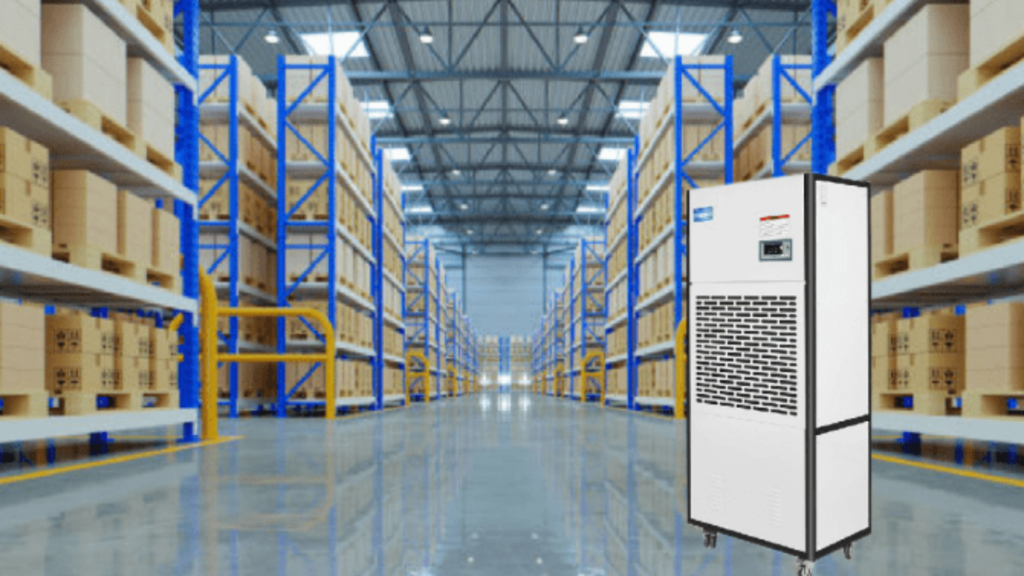
Discover everything you need to know about purchasing a dehumidifier with our comprehensive guide.
How to Install a Dehumidifier?

Once you’ve purchased dehumidifiers, you’re likely eager to learn how to install them. In this article, I’ll provide a detailed description of each step involved in installing industrial dehumidifiers with 3-phase power. Whether you’re a professional dehumidifier installation engineer or not, this article will help you acquire the necessary installation skills! Step One: Choose the Right Location Before installing a dehumidifier, choosing the right location is crucial as it significantly affects its operational efficiency. When placing an industrial dehumidifier, consider the following points: 1.1 Do Not Place the Dehumidifier Near the Door or Warehouse Entrance When the dehumidifier is operating, it draws in nearby moist air and exhausts it at a 45-degree angle from the top vent until the surrounding moist air is converted into dry air, reaching the target humidity level. Only then does it enter standby mode. If the dehumidifier is placed near the entrance of a room or warehouse, regardless of its efforts, there will always be a constant supply of moist air entering from the outside. Additionally, the dry air produced by the dehumidifier may also “escape” to the outside through the doorway. Therefore, for the dehumidifier to work efficiently, you should not place it at the entrance, or simply close the door of your warehouse. This way, after operating for a while, the dehumidifier will quickly reach the desired humidity level. 1.2 Place Multiple Dehumidifiers Evenly Throughout the Area to Be Dehumidified. 1)If You Do Not Arrange the Dehumidifier’s Position Properly and Place It Randomly. In such a scenario, after the dehumidifier has been operating for some time, you may encounter a situation where some areas have already reached the target humidity level, but other areas still remain relatively humid. At this point, you may notice that the dehumidifier has entered standby mode, while the area farthest from the dehumidifier still hasn’t reached the target humidity level. This imbalance in humidity occurs within the area you intend to dehumidify. 2)If You Strategically Place the Dehumidifiers… If you evenly place the dehumidifiers in the area to be dehumidified, the humidity throughout the space will quickly decrease. This strategic placement ensures that the humidity levels inside the space are balanced, maximizing the efficiency of the dehumidification process. 1.3 Not Sure How to Position the Dehumidifier If your project area is large and you’re unsure how to position the dehumidifiers effectively, you can share your factory floor plan with us. Our engineering team will create a simple layout based on your floor plan to ensure optimal humidity balance throughout your facility, ensuring that every area falls within the effective dehumidification range. Below is an example floor plan we recommended for a client’s warehouse. The dehumidifiers are positioned against columns to minimize interference with daily warehouse operations such as storing and moving goods, and they are evenly distributed throughout the warehouse interior. Step Two: Arrange the Dehumidifier Power Line Once you have finalized the placement of the dehumidifiers, we’ll proceed with arranging the electrical circuits for them. The design of the electrical circuits is crucial, and it requires the technical support of professional electrical engineers. After going through this section, you should be able to discuss installation details with your local engineers. Here, I want to remind you that in all steps related to electrical operations, it’s essential to have a professional electrical engineer to handle them, and electrical safety should be prioritized! 2.1 Design the Wiring Routes. Designing the wiring routes primarily pertains to scenarios where multiple industrial dehumidifiers are used together. In such cases, it’s crucial to engage a professional electrical engineer to calculate current loads and determine the appropriate wire diameter. The wires should then be installed at the designated locations for the dehumidifiers. Factors such as wire length, thickness, and cost should be discussed and evaluated with your electrician. Alternatively, you can entrust this task to a professional company and simply settle the bill. 2.2 Check Power Supply Voltage Before installing industrial dehumidifiers, it’s essential to have a professional electrician check if the voltage of the 3-phase power supply in your warehouse or workshop falls within the voltage range suitable for the dehumidifier. This step is crucial and should never be overlooked. You can refer to this video for checking the power supply voltage: Both High and Low Voltage Can Damage the Dehumidifier. If the voltage in your warehouse/room is too high, it will increase the working current of the dehumidifier, causing it to burn out in an instant. Similarly, if the voltage is too low, the working current of the dehumidifier will increase (while the load power remains constant), which can lead to the dehumidifier not functioning properly or burning out. The stability of the voltage in your power grid is crucial, as it can inadvertently affect the normal operation of the dehumidifier. This not only impacts the lifespan of the dehumidifier but also affects all electrical devices in your warehouse. Damage caused by voltage fluctuations persists even after the voltage returns to normal. Only after being repaired by a local engineer can the equipment be used normally. Before installing and using any electrical equipment, always have an electrical engineer check the voltage. 2.3 Install Miniature Circuit Breaker (MCB) You might say, “My voltage is often unstable. Does that mean I can’t use dehumidifiers and other electrical equipment?” Not at all. As long as you install an air circuit breaker for each dehumidifier, you can use them confidently. It will protect your industrial dehumidifiers in your warehouse/workshop at all times, even when the voltage in your power grid is unstable. The Working Principle of an Air Switch With Leakage Protection. When the current supplied by the power source is too high, the air circuit breaker will trip. It will also trip in case of leakage. For example, during a moment of unstable voltage in your area, if the current suddenly increases beyond the range of the air circuit breaker, it will automatically cut off the power to prevent damage to the dehumidifier. Leakage
What is Dehumidifier- The Ultimate Guide
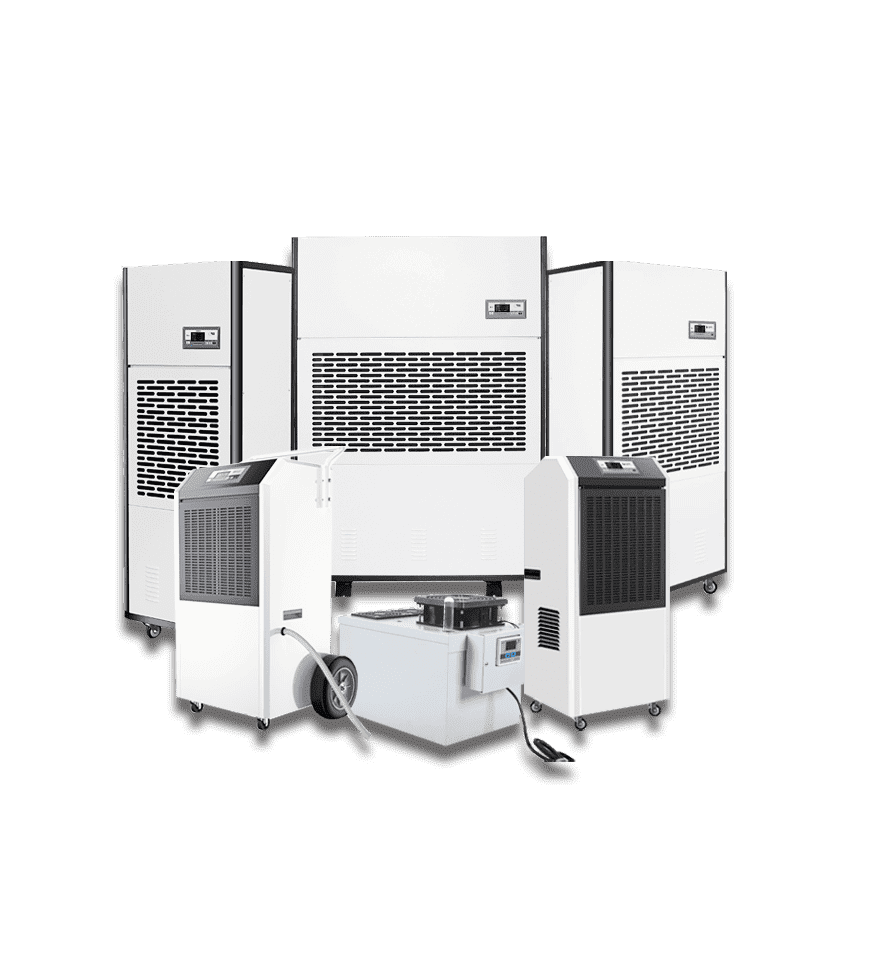
If your warehouse/basement is damp, but you’re unfamiliar with dehumidifiers, don’t worry! This is the ultimate dehumidifier guide tailored just for you! Whether you’re a novice or an expert in dehumidifiers, this article will provide plenty of useful assistance! What is a Dehumidifier? A dehumidifier is the best choice for reducing indoor humidity. It works by drawing in humid air (water vapor) from the air and expelling liquid water through a hose, thus lowering indoor humidity. You can set the target humidity level on the dehumidifier so that your indoor humidity will always remain within a dry and comfortable range. How Do Dehumidifiers Work? The dehumidifier uses a fan to draw in humid air from the space. As this humid air passes through a cold evaporator coil, it condenses into water droplets, collected in a tray, and expelled through a drainage hose. The now dry air continues through the fan and out of the exhaust vent. After repeated cycles, the dehumidifier controls indoor humidity to the target range. Type of Dehumidifiers Different types of dehumidifiers play equally important roles in various fields. They are generally named based on different working principles and application scenarios. Refrigerant dehumidifiers: Desiccant dehumidifiers Common Dehumidifier Features Air Filter: Every dehumidifier comes with a filter, which prevents particles and fine dust from entering the interior of the dehumidifier, enhancing its efficiency. Some filters are washable, so you just need to clean and dry them regularly; filters that are not washable, need to be replaced periodically. Because after using the dehumidifier for a few months, you will find that the filter is very dirty. Humidistat Function: Every dehumidifier has a control panel where you can control humidity. It also displays real-time temperature and humidity. You can adjust the humidity by pressing plus and minus on the control panel, set your target humidity, and also set a timer, which is very convenient. Automatic Defrost Function: When purchasing a dehumidifier, make sure the model you choose has an automatic defrost function. Because the temperature of the evaporator is already low, it is easy for ice to form on the surface of the evaporator in low-temperature environments or when used in winter. This will affect the performance of the dehumidifier. However, if the dehumidifier has an automatic defrost function, it can automatically thaw the ice and then switch to dehumidification mode. This mode switch does not require manual operation; the dehumidifier can switch automatically. Drainage Automatic Drainage Function: After the dehumidifier works normally, there will be a continuous discharge of condensate. The dehumidifier will collect the water first through the water receiving tray and then discharge it along the drainage pipe. You just need to prepare a container to regularly pour out the collected water. Noise: When the dehumidifier is working, it inevitably generates a certain amount of noise. Moreover, the smaller the dehumidification capacity of the dehumidifier, the smaller the noise. The noise in sleep mode can be negligible. Similarly, the larger the dehumidification capacity of the industrial machine, the louder the noise. So, you should choose a suitable dehumidifier according to your usage scenario to prevent excessive noise from affecting your work and life. Portability: Dehumidifiers are all portable. Generally, dehumidifiers have four wheels of the same size, which can rotate flexibly at 360 degrees. Some dehumidifiers have two large wheels and two small wheels, which can be pulled from the first floor to the second floor, very convenient. For larger industrial dehumidifiers with a dehumidification capacity of over 100 kg, there are no wheels to support them, so these dehumidifiers will use wooden pallets, and you can easily move them with a forklift. Automatic Restart Power-off Memory Function: Basically, all dehumidifiers have this function. When the power in your factory suddenly goes off and then comes back on, you don’t need to restart each dehumidifier manually. Because they have a power-off memory function, they will continue to work with the settings before the power outage, and you don’t need to do anything during this period. Why Do You Need to Use Dehumidifiers? Are you debating whether or not to purchase a dehumidifier? Below, I’ll provide you with insights from two perspectives to help you decide whether you need to invest in dehumidifiers. After reading the following content, I believe you’ll be able to make the perfect choice. Importance of Controlling Humidity Levels Humidity is not only crucial for human health but also plays a significant role in indoor air quality. Proper humidity control can provide a comfortable indoor environment, preventing indoor air from becoming excessively dry or damp, and effectively inhibiting mold growth and microbial proliferation. Excessively high humidity can damage important goods stored in warehouses, such as furniture, wood, electronics, etc. By controlling humidity, we can protect these items from damage, thereby prolonging their lifespan. How Do You Know If You Need Dehumidifiers? begins to appear in corners or on the ceiling. When humidity remains consistently high for a long time, bacteria and mold start to proliferate. When you notice mold spots on your walls or ceiling, it’s a warning sign from the humidity. Condensation on walls. If you suddenly notice small droplets forming on your walls or if it appears as though steam is condensing on them, it’s a sign that indoor humidity has become tangible. If left untreated, it could lead to unnecessary damage to your stored products. High indoor humidity perception. When indoor humidity reaches a certain level, people inside may feel a damp sensation on their skin. Over time, this can even affect health. How Do You Choose the Right Dehumidifier? Before purchasing a dehumidifier, several factors need to be considered: If you’re unsure about selecting a specific dehumidifier model, you can describe your specific requirements to the dehumidifier supplier. Professional dehumidifier dealers can recommend suitable models based on your information after analysis. How QC Tests Dehumidifiers? During the production process, including after production, our quality control department conducts a series of tests to ensure the quality of the machines. In
Optimizing Cannabis Growth: Calculating Dehumidifier Quantities for Greenhouse Cultivation”

Unlock Bigger Yields: Expert Tips for Dehumidifying Your Cannabis Greenhouse. From calculating ideal unit numbers to optimizing growth conditions, discover the secrets to maximizing your cannabis cultivation with tailored dehumidification strategies.
Choosing the Right Water for Your Cigar Humidifier: What You Need to Know

Elevate your cigar game with our witty guide on cigar humidifier water! Discover the distilled secret to perfect pampering. Delight in flavorful cigars that keep your customers coming back.
How do I calculate how many dehumidifiers need to be configured?

Many customers in the purchase of dehumidifier, very confused do not know how much to buy. Based on our own experience, we offer you some feasible suggestions for your reference
Why is Checking Room Voltage Before Dehumidifier Installation Crucial?
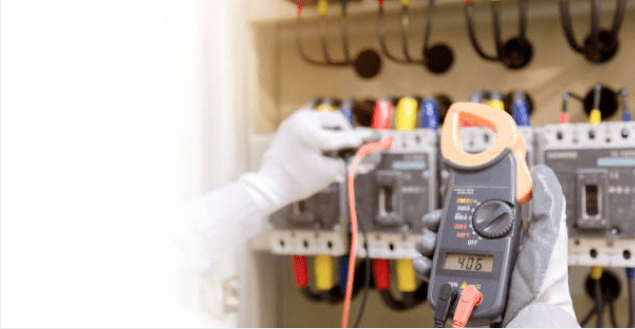
Unlock the secret to flawless dehumidifier installation! Discover why voltage matters, easy measurement steps, and why professional assistance is a must. Elevate your expertise for optimal results!
The Ultimate Guide to Choosing the Right Industrial Dehumidifier Supplier for Your Warehouse Project

Find the perfect industrial dehumidifier supplier for your warehouse project. Discover how to evaluate experience, certifications, and quality standards. Protect your inventory from moisture damage. Contact us for expert assistance today!
Unlocking growth opportunities: Why it’s time to replace Oasis Magna 3.0 Electronic Humidifier with GetJoeAir in your product lineup

Enhance your cigar accessories with GetJoeAir’s premium humidifiers. Customizable, versatile, and competitively priced, our solutions cater to diverse cabinet needs. Unlock branding opportunities and elevate your business. Choose GetJoeAir for exceptional humidification.

